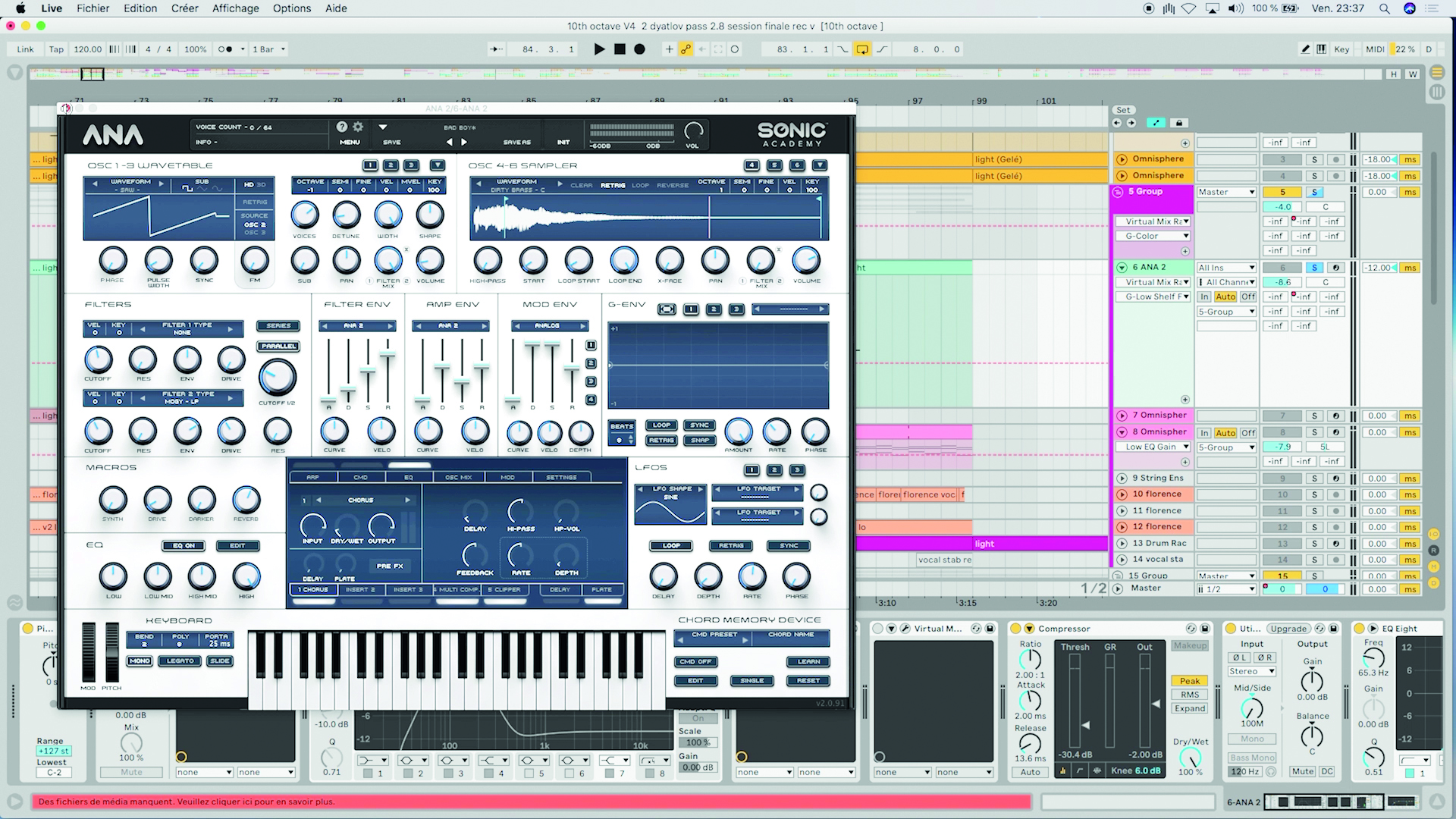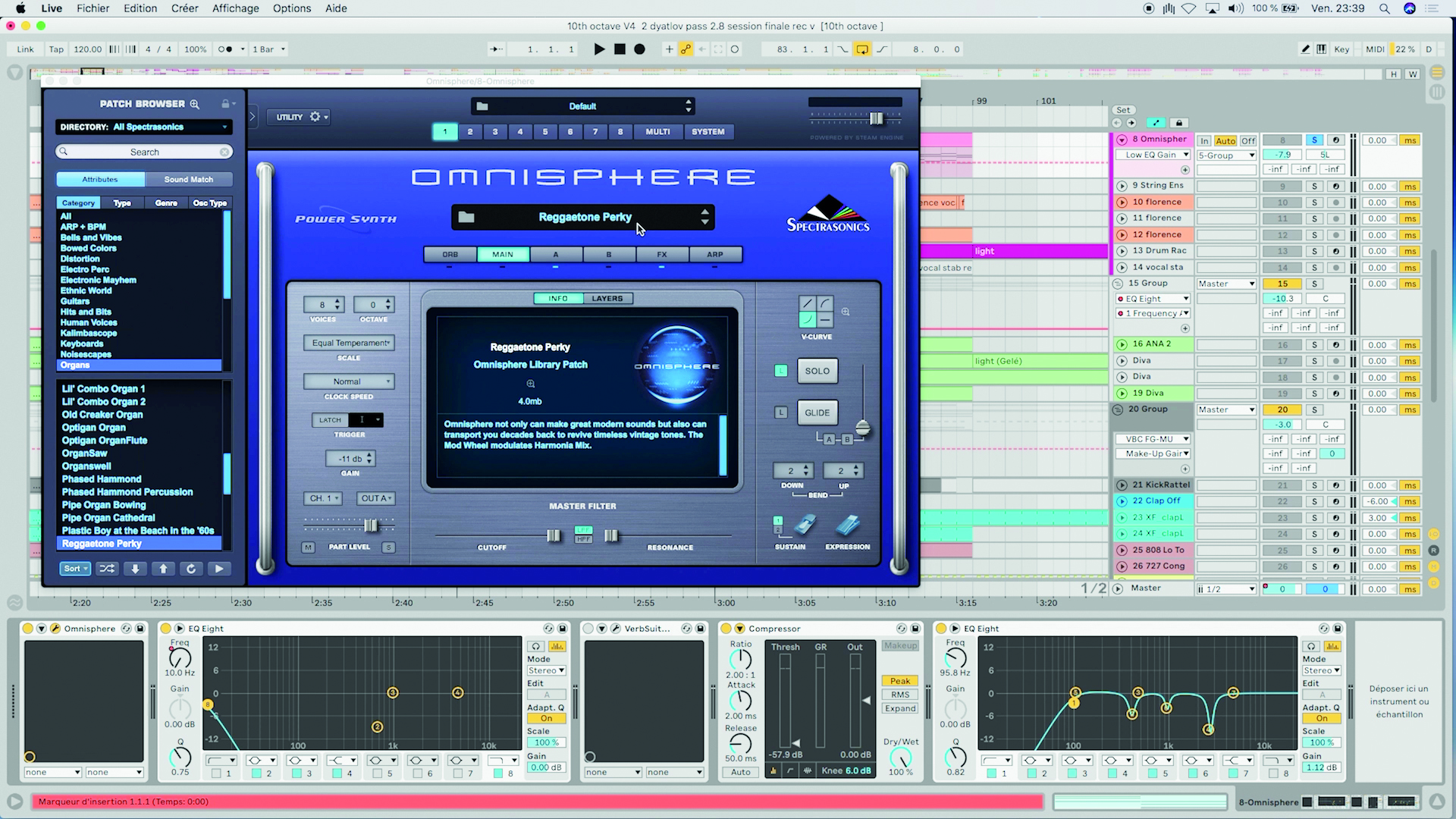The track: Right Now by Joachim Pastor - "I try sometimes to use sounds that I don’t like"
MTS 2020 special edition
"I’M PRETTY HAPPY DOING WHAT I DO"
MTS 2020: While Versailles is famous for being the home of Louis XIV’s opulent royal palace, it boasts another ex-resident who also enjoys the finer things in life: Armada Music’s Joachim Pastor, whose eclectic style covers everything from whimsical Gallic-flavoured synth pop to minimal techno and accessible deep house flavours.
Hardware:
> Apple MacBook Pro
> Focal Twin6 BE x2
> Earsonics EM32
> MOTU audio interfaces
Software:
> Ableton Live
> Elysia plugins
> Slate Digital plugins
> Spectrasonics plugins
> u-he plugins
We caught up with Joachim to discuss how he created his summer slammer Right Now, and find out more about his considered approach to making music.
You’re a classically trained musician with years of study behind you. Is this an advantage or disadvantage when it comes to making electronic dance music?
“I think both... when you are classically trained, you are more... ‘formatted’, or like, in a mold? On some level it will give you less freedom than if you know nothing about it, because when you know nothing you have the freedom of having creativity?
“When I was really young, I had that musical ear, it’s not like a huge talent or anything: I have friends who have never done music in their whole life, but can whistle a tune perfectly, you know?
"When I went through the school for the first five years, I didn’t like it, I didn’t want to work on flutes or whatever. I thought it was crap, but they kept me there, they were like ‘he’s got the good ear, we’ve got to keep him’.
“I’m sure that if I had not done that training I’d still be OK, because I had the ear. If you gave me a score right now, I’m not even sure I could still read it! Now I do everything by ear and if it sounds good, it’s good.
Want all the hottest music and gear news, reviews, deals, features and more, direct to your inbox? Sign up here.
"I think people who haven’t had musical training will be able to make good stuff just because of the feel for the sound.”
You play guitar, but the track Right Now was created entirely in-the-box. Do you feel like you come up with different results when using software compared to ‘real’ instruments?
“It’s kind of a two-way street because with the virtual instrument... I can do anything I want, I’m not limited by the physical world. It sounds different, sometimes it will sound sterile or whatever, because it’s not the real world.
I think people who haven’t had musical training will be able to make good stuff just because of the feel for the sound.
"But on the other hand, it’s also nice to be able to actually play the guitar, sometimes you will make a mistake and that will lead to something interesting and different. Also the fact that people don’t all play the same, with the actual playing, there’s more interpretation than there is with software.
“I think they’re both great. I like to play, but if you’re using software there are tricks to make it sound pretty good, you know? You could put some effects in to get the sound a bit dirty.
“Sometimes the most interesting ideas come from mistakes, but you’re less likely to have those kinds of discoveries when you’re programming a sequencer. How do you create an environment where those unexpected ideas can still occur? Like when you listen to someone else’s tune, it’s not something you had in mind and because you didn’t make, it sounds fresh, you know?
"So when you make your mistake, it’s the same thing. It’s like, you didn’t make it on purpose. It doesn’t come from you. So when I do my ‘exploration’, I always try to get to that point where you try to find something fresh.
“Something I’ve struggled with for years is that once you start doing music on your computer, it’s very mental. It’s like you have the music in your mind and you’re trying to make it like that, but then it becomes not fresh when you make the music.
"You produce it as you compose it, you listen to the same thing over and over and over again, and you get bored with it pretty, pretty quick. I feel like if it’s just an instrument and you’re recording it in, it’s more spontaneous because electronic music is more calculated.
“So I try sometimes to use random stuff. I try sometimes to use sounds that I don’t like or that I don’t usually use. Let’s imagine if you’re scrolling through ten snare samples, there are three that you love and you always use because you like them. But by taking the one that you liked the least, and by working on it, it’ll become new. And then it will become more fresh, it will be exciting.”
You’ve said you’ve spent 100 hours on some tracks. Is it worth it?
“I don’t know. If you’re happy, then it’s worth it. But if you never have success, then maybe it’s still worth it to try. I feel like it is worth it because it’s my passion and I’m doing OK... and I’m pretty happy doing what I do!”
THE SOFTSYNTHS OF RIGHT NOW
Joachim uses a selection of softsynths to create Right Now’s chilled-out instrumentation
01> Spectrasonics Omnisphere

“I like to record my own guitars, but this track was made entirely in-the-box and I used Spectrasonics Omnisphere instead,” Joachim reveals.
He uses multiple instances of the ‘Jazz Guitar Fingers A’ patch, panned with different effects in order to create a wide stereo sound.
02> Sonic Academy ANA 2

Sonic Academy ANA 2 is used to create the track’s brassy stab, and Joachim runs this through a plate-based patch in Slate Digital VerbSuite Classics to give it a long tail. This is then compressed with a sidechain input from the kick to create a strong pumping effect.
03> Reggaetone Perky

Omnisphere is called in again for the organ part, which comes courtesy of the ‘Reggaetone Perky’ preset. Joachim uses EQ Eight with an automated high-cut filter frequency to bring the part in and out during the arrangement. He also sidechains this and uses another EQ Eight to attenuate some resonant frequencies.
04> Bassline

The track’s bassline is based around another ANA 2 patch, run through Slate Digital Virtual Mix Rack with console emulation, saturation and EQ effects. This is doubled with a high-passed layer from u-he Diva to add character to the mids and highs.
05> Bass return track

The Diva layer isn’t routed directly to the master, rather it runs through a dedicated bass return track where it’s subjected to further saturation and EQ via Virtual Mix Rack, pulse sidechain compression, reverb, and a touch of Soundtoys Little MicroShift to enhance its stereo width.


Future Music is the number one magazine for today's producers. Packed with technique and technology we'll help you make great new music. All-access artist interviews, in-depth gear reviews, essential production tutorials and much more. Every marvellous monthly edition features reliable reviews of the latest and greatest hardware and software technology and techniques, unparalleled advice, in-depth interviews, sensational free samples and so much more to improve the experience and outcome of your music-making.
